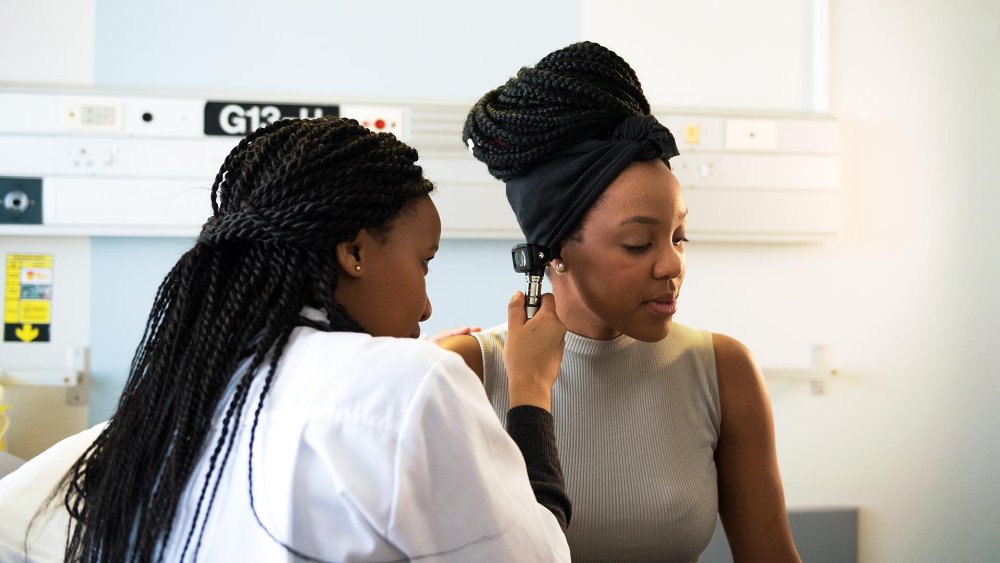
From addressing rising costs to a growing focus on diversity and equity, Bipin Mistry, MD weighs in with his healthcare industry predictions for 2023.
As we reflect on the year, I’m sure you’ll agree that it was one marked by significant change and challenges and, at the same time, clarity and opportunity.
We picked up the pieces from the COVID-19 pandemic and took a hard look at the health disparities that have existed for years but were brought into even clearer focus.
Today, we’re finding ourselves at a crossroads.
We are staring down a looming recession, inflation, and rising healthcare costs as organizations look for new ways to improve health equity and outcomes, drive engagement, and retain their best talent.
Historically, they’ve adopted multiple point solutions to address these issues, but in the coming year much of that will change and the employee benefits space will undergo a major transformation.

Employers will be laser-focused on streamlining health and wellbeing solutions, creating personalized journeys, and connecting those journeys through data and human healthcare navigation to increase utilization, drive value, and bend the cost curve.
Here’s what I predict is in store for 2023.
1. Streamlining benefits to combat rising healthcare costs
Employer healthcare costs are expected to increase 6.5% to more than $13,800 per employee in 2023.
It should come as no surprise, therefore, that more than 2 out of 3 employers plan to prioritize controlling rising healthcare benefits costs over the next three years, a recent survey from WTW found.
As a result of the high price tag for healthcare, employees may delay or think twice about seeking care, which is likely to exacerbate existing problems and further drive costs.
Next year, employers will be scrutinizing their benefits, and looking at whether each solution is creating value and reducing medical expenditures.
The adoption of healthcare navigation will increase as well, as organizations look to optimize the healthcare ecosystem with the right solutions, tie in wellbeing benefits, and create personalized journeys for members that improve utilization and outcomes and control spend.
2. Prioritization of healthcare quality and cost
On July 1, 2022, the Transparency in Coverage Final Rule went into effect, which requires payers to disclose pricing for services and items they provide. This rule was a follow-up to the No Surprises Act.
While the rules are designed to help consumers comparison shop and estimate their costs before receiving services, research shows only 14% of hospitals are compliant.

The bigger issue, however, is estimating costs is only one part of identifying a provider.
A participant may find an affordable doctor but finding a quality provider is critical to improving health outcomes.
In 2023, therefore, employers will look to benefit solutions that prioritize quality and cost and steer members to appropriate care.
3. New solutions to address rising cancer rates
We know that delayed care during COVID-19 has led to advanced-stage cancer diagnoses, and it’s a trend we expect to see more of next year.
Cancer currently outpaces all other conditions with 83% of employers saying that cancer is among the top three conditions that drive healthcare costs.
Although there’s been a host of new diagnostics, cancer drugs, and treatments, inequities and barriers to care persist. Consider this:
- 69% of community oncologists missed opportunities for precision medicine in a recent abstract shared at an ASCO annual meeting
- 80% of all cancer care is provided by community oncologists instead of subspecialties who work at top cancer centers
Plus, in rural areas, there is a 12% higher mortality rate from cancer.
CMS is addressing inequities in rural healthcare, but next year expect to see employers adopting solutions that provide participants access to the nation’s top specialists, expert medical opinions, and unlimited clinical guidance and support from a dedicated, multidisciplinary team.
We also anticipate more solutions for the early detection of cancer such as Grail and Blueberry Diagnostics becoming available.
4. A greater focus on health equity and diversity, equity and inclusion (DE&I)
Over the last few years, we’ve seen increased awareness around the importance of addressing SDoH and efforts to improve health equity and DE&I, and we’ll certainly see more in the coming year.
Food as medicine, in particular, is one area that will gain traction in 2023 with direct solutions like Instacart Health and community-based solutions from health systems and other entities being nurtured.
At Children’s Hospital Colorado, the Resource Connect program gives families access to fresh food, help signing up for SNAP benefits, and further connects individuals to a nonprofit that provides diapers, wipes, and school supplies.
Solutions that aim to address health equity in rural healthcare such as Main Street Health and those that provide caregiver support may crop up as well.

How to improve health equity with food as medicine programs
Read this blog from November 2022
5. Behavioral health solutions that take a proactive approach
The mental health crisis has been at play for decades, but in the aftermath of the pandemic, we’re seeing unprecedented levels of anxiety and depression.
Plus, 73% of workers have high or moderate levels of stress, and 34% are suffering symptoms of burnout.
Behavioral health visits are up 17% from pre-COVID levels, but the ongoing provider shortages are leaving many without care.
In fact, 30% of large employers say their networks don’t have enough providers to ensure their employees have timely access to care, a recent Kaiser Family Foundation report shows.
Next year, employers will look to solutions that identify members at risk for behavioral health issues early on in their healthcare journeys, whether they present with symptoms or not.
With the prevalence of anxiety and depression, offering screenings to every participant goes a long way in uncovering and addressing these often-invisible illnesses that present with other co-morbidities.
Solutions that provide access to a designated team of multidisciplinary behavioral health clinicians to offer guidance, education, and a safe place to be vulnerable will help break down barriers—whether they are emotional or structural—to reduce stigma around experiencing mental health challenges and help people get the right care.
6. Virtual primary care integration
Virtual primary care will surge in 2023, with 32% of employers planning to implement services. Yet, the lack of integration between vendors is a concern for more than half (60%), the Business Group on Health’s latest report shows.
As a result, employers will be looking to solutions that provide second opinions that drive virtual primary care utilization, those that provide care coordination, and a multidisciplinary care team of behavioral health specialists, nurses, and clinicians who support an employer’s telehealth solution.
Also expect to see organizations turning to healthcare navigation solutions and single platforms that bring together health, wealth, payroll, wellbeing, and retiree benefits and provide a seamless experience for their employees.
of large employers currently offer or plan to offer one or more specialized women’s reproductive health benefits such as those for high-risk pregnancy, lactation, and fertility
of menopausal women surveyed have considered at least one major change to their employment due to menopause
7. Adding women’s reproductive health benefits
A recent survey by Mercer found that 48% of large employers currently offer or plan to offer one or more specialized women’s reproductive health benefits such as those for high-risk pregnancy, lactation, and fertility.
Although most organizations are not offering menopause benefits, it’s likely to gain traction in the coming year.
These types of benefits can help to address the associated cardiovascular risk factors, improve outcomes and control spend, while also improving job satisfaction and retention with a more inclusive culture that values the unique needs of their population.
In fact, a recent survey by Carrot Fertility found that of those menopausal women surveyed, 70% have considered at least one major change to their employment due to menopause.
8. More options for preventive medicine
In the new year, expect to see more early detection tools and solutions in areas such as genetics and heart disease like Cleerly, as well as wellbeing solutions that cover mind, body, financial, and life.
We’ll also see more home testing solutions that improve health equity, and help marginalized populations such as LGBTQ populations and minority groups access care like Everly Health, Let’sGetChecked, and Catapult. Many still lack primary care physicians or have deferred care due to the pandemic, and the option of at-home solutions can help engage populations in annual wellness.
9. Worsening healthcare staffing shortages
Workforce shortages have been a challenge for years, and they show no signs of slowing down, with more than 230,000 providers who left the industry last year.
Healthcare staff are burned out and find it difficult to achieve work-life balance, something that was exacerbated by COVID-19.
In the new year, the supply shortage will only increase, leading to delayed care and treatment, poor health outcomes, and a significant financial impact. Hospitals will downsize, reduce services, and M&A will increase.
healthcare providers left the industry last year.
Source: Definitive Healthcare - Addressing the healthcare staffing shortage
While there’s no easy solution, we’ll likely see digital tools and automation, particularly in revenue cycle management, play an even bigger role in driving efficiency, addressing workforce shortages, and achieving the Quadruple Aim.
We may also see more health systems provide affordable employee housing to combat shortages.
How Alight Can Help
At Alight, we drive value-based care through data, high participant engagement, and clinical guidance that lowers costs for employers.
Our healthcare literacy, expert medical opinions, treatment decision support, and surgery avoidance solutions increase utilization, guide members to quality care, and reduce spend.
As we look ahead to 2023, I feel hopeful because we’re finally at a point where we’re connecting the dots between human and digital and exchanging data in a meaningful way.
In the upcoming year, new solutions and models will be tested, but employers will only opt for those that deliver the best long-term value, which will also improve healthcare for all stakeholders.
I wish you and your families a healthy and happy holiday season.


